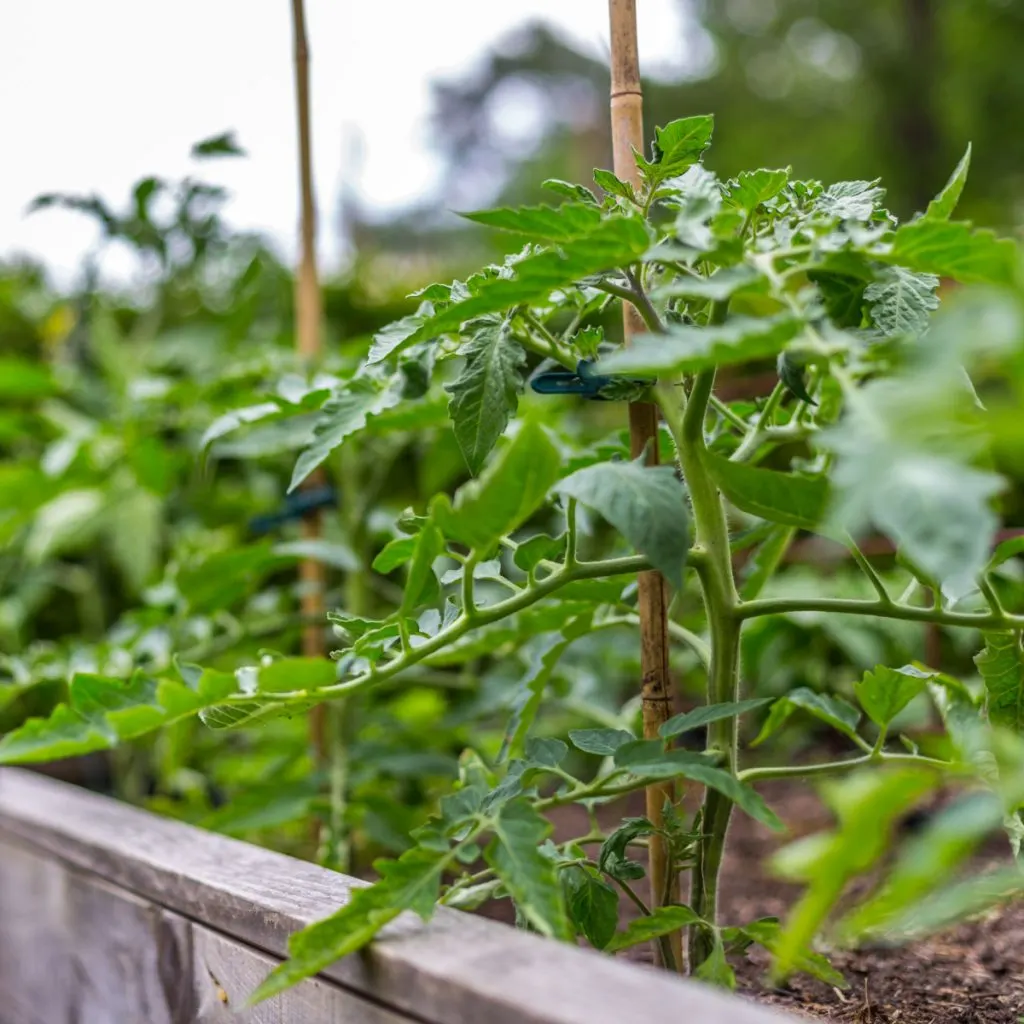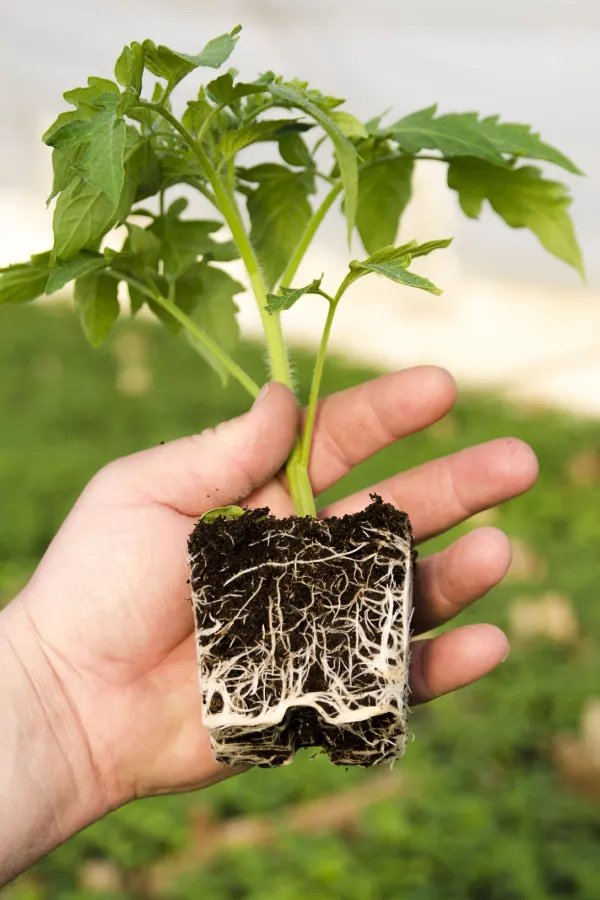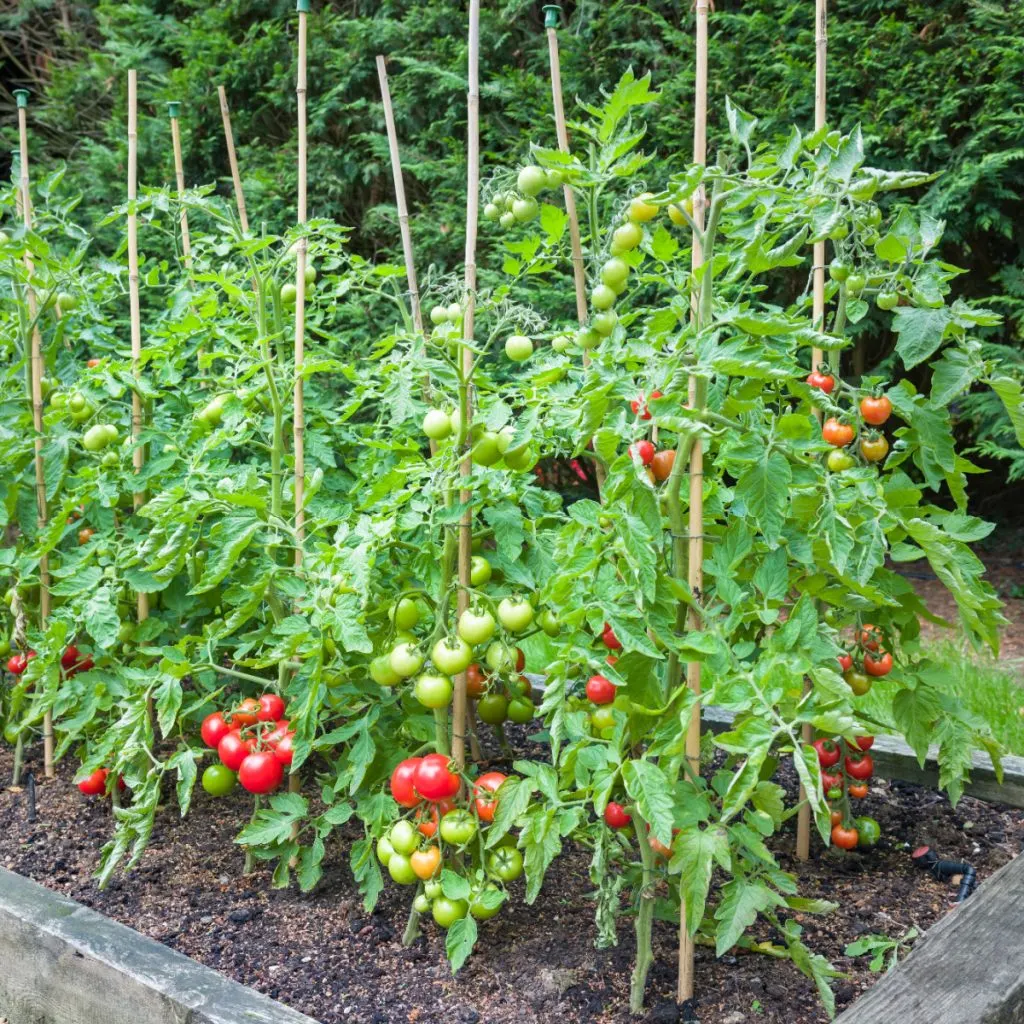One of the easiest ways to grow tomatoes is in raised beds – not only does it allow you to produce a big harvest in a small space – but it also has a long list of advantages when compared to growing tomato plants in a traditional garden setting!
Not only is it much easier to plant tomatoes in elevated beds, but it’s also far easier to care for your plants. Raised beds are far easier to keep free of competing weeds. They also make it watering, fertilizing, pruning and harvesting far less complicated too. But growing tomatoes in raised beds also can have benefits for your plants!
Raised bed soil warms up in the spring far quicker than in a traditional garden setting. And warm soil means faster and more robust root growth for your plants. Even better, in the confined spaces of a raised bed, it’s far easier to key soil nutrients to the soil to help your plants grow better.

But when it comes to having a successful harvest, it’s important to follow a few key tips and tricks to keep your plants healthy and strong – and producing all season long! With that in mind – here are three key secrets to growing tomatoes in raised beds!
How To Grow Tomatoes In Raised Beds
#1 – Make Sure Your Beds Are Deep Enough!
One of the biggest mistakes tomato growers make when growing in raised beds is not having their beds deep enough. Tomatoes have extensive root systems – and they need a lot of soil to develop them fully.
It doesn’t matter if your beds are made of metal, untreated wood, brick, or even plastic – but they do need to be deep. In fact, they need to be at least 12 to 18 inches deep to support healthy growth for tomatoes.
While tomato plants grow to be all different sizes, they all have large root systems. These extensive root systems help to anchor the plants in place, and they absorb the many nutrients tomato plants need in order to grow and produce.

Because of their massive roots, tomato plants need plenty of space to grow and expand. The added height will also make your gardening chores all that easier as well! Affiliate Link: Best Choice Products 6x3x2ft Outdoor Metal Raised Garden Bed
#2 Fill Your Beds Raised Beds With The Right Soil Mix For Growing Tomatoes
The next secret deals with filling your raised beds with the best soil for growing tomatoes. Even though you need to use taller raised beds when growing tomatoes, that doesn’t mean you have to fill the entire thing with soil. In fact, your plants will grow better if you don’t – and here’s why.
While tomato roots like moist soil, they also don’t like to sit in overly saturated soil. Proper drainage is so important when it comes to keeping roots healthy and preventing rotting.
So one of the best ways to ensure your raised beds drain easily is to fill the bottom with gravel or stone. This will allow the excess moisture to drain out of the bottom of the raised bed.
Next, you want to add a layer of organic matter. This layer also allows for better drainage but it also allows the roots to grow and expand with ease. Choose materials like shredded leaves, straw, or even grass clippings. Don’t be afraid to really pile up the organic matter because it will compact once you add the soil. A layer of between four to eight inches is best.

Adding The Soil
Now it’s time to add your soil. But not just any type of soil works in raised beds. Avoid using garden soil or topsoil as your only soil source.
While these soils work in some applications, they are just too dense and heavy to allow the tomato plants to grow in raised beds. Instead, you want to create a soil that is light, well-draining, and packed full of nutrients and resources that the tomato plants need.
You can achieve the perfect soil by combining equal parts of pulverized topsoil and compost. Then, mix in a bit of potting soil and perlite to lighten the soil that much more. Aim for using 1 part of potting soil and ½ parts perlite for every 5 parts of both compost and topsoil.
#3 Planting With Power
When you go to plant your tomato transplants, it’s vital to add big power to your planting hole. Start by adding a few inches of compost into each planting hole. This additional compost will help plants retain moisture and have access to ready to go nutrients.
To really power tomato plants, also add a few tablespoons of powdered egg shells, a quarter cup of worm castings, and a quarter cup of spent coffee grounds into each planting hole. And don’t forget to plant deeply. See, How To Plant Tomatoes For Big Success!

After adding the young tomatoes to the raised beds, add some type of support. Tomatoes grow rapidly and most varieties need some sort of trellis or support system – even those grown in raised beds.
Once the supports are in place, it’s time to add mulch. Mulch is critical to growing in raised beds because it helps to maintain moisture and regulate the soil temperature. Keep a layer of 4 to 6 inches of mulch around your tomato plants but avoid having the mulch touch the stems of the plants.
Don’t be afraid to use live plants as mulch. Growing beneficial crops like marigolds and nasturtium in the same raised beds as the tomatoes is a great way to cover the soil while benefiting the tomato plants at the same time. See: Why To Plant Marigolds With Tomato Plants
Growing & Maintaining Tomatoes In Raised Beds
Even though you added plenty of compost at the time of filling the raised beds and planting, you still need to fertilize the tomatoes. Apply an all-natural liquid fertilizer every 3 to 4 weeks during the late spring and summer months. Affiliate Link: Bloom City Tomato & Veggie Plant Food
Tomato plants need around an inch of rainwater or hand watering weekly. Be sure to check the soil deep in the raised beds to see when they need to be watered. Plants in raised beds will typically need to be watered more often than those planted in the ground.
If you want to grow tomatoes in containers this year, be sure to see: The 3 Biggest Secrets To Growing Tomatoes In Containers – Successfully! Here’s to growing amazing tomatoes in raised beds this summer!
I Grow Tomatoes
Follow Our Facebook Page For Even More Great Tomato Growing Tips! I Grow Tomatoes Facebook Page
I Grow Tomatoes is a website created for those who love all things about tomatoes – from planting and growing – to cooking and canning! We publish two articles every week, 52 weeks a year. Sign up today to follow via email! This article may contain affiliate links.
